Miryam de Lhoneux
The Roles of English in Evaluating Multilingual Language Models
Dec 11, 2024Abstract:Multilingual natural language processing is getting increased attention, with numerous models, benchmarks, and methods being released for many languages. English is often used in multilingual evaluation to prompt language models (LMs), mainly to overcome the lack of instruction tuning data in other languages. In this position paper, we lay out two roles of English in multilingual LM evaluations: as an interface and as a natural language. We argue that these roles have different goals: task performance versus language understanding. This discrepancy is highlighted with examples from datasets and evaluation setups. Numerous works explicitly use English as an interface to boost task performance. We recommend to move away from this imprecise method and instead focus on furthering language understanding.
How Good is Your Wikipedia?
Nov 08, 2024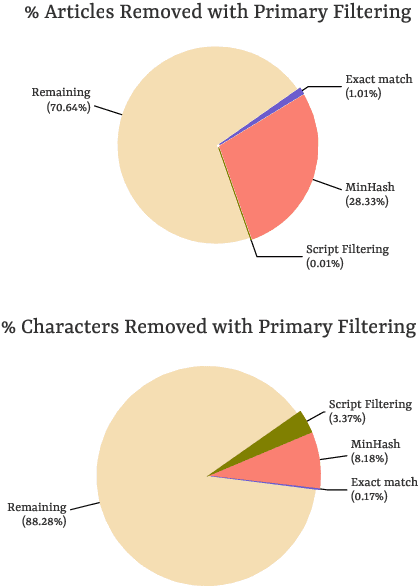
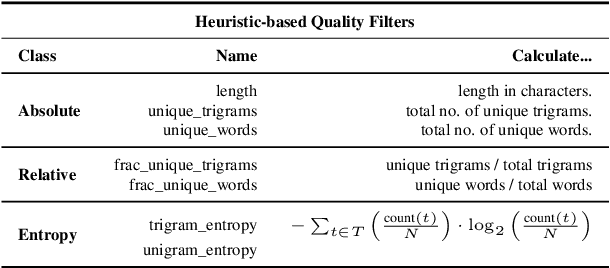
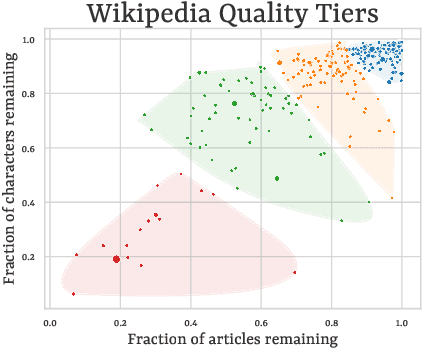
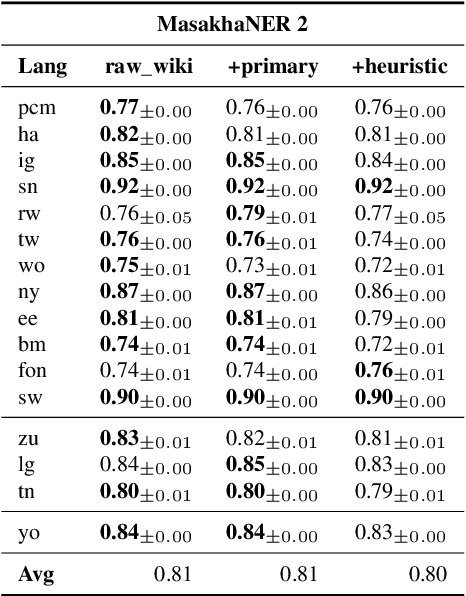
Abstract:Wikipedia's perceived high quality and broad language coverage have established it as a fundamental resource in multilingual NLP. In the context of low-resource languages, however, these quality assumptions are increasingly being scrutinised. This paper critically examines the data quality of Wikipedia in a non-English setting by subjecting it to various quality filtering techniques, revealing widespread issues such as a high percentage of one-line articles and duplicate articles. We evaluate the downstream impact of quality filtering on Wikipedia and find that data quality pruning is an effective means for resource-efficient training without hurting performance, especially for low-resource languages. Moreover, we advocate for a shift in perspective from seeking a general definition of data quality towards a more language- and task-specific one. Ultimately, we aim for this study to serve as a guide to using Wikipedia for pretraining in a multilingual setting.
Pixology: Probing the Linguistic and Visual Capabilities of Pixel-based Language Models
Oct 15, 2024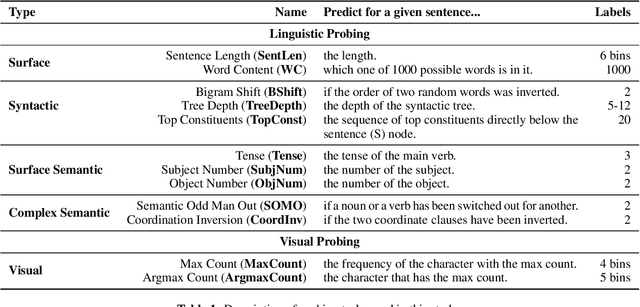

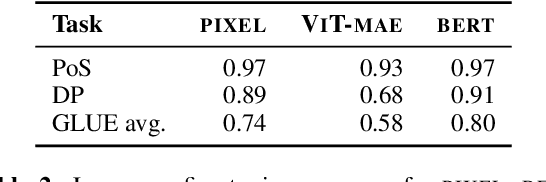
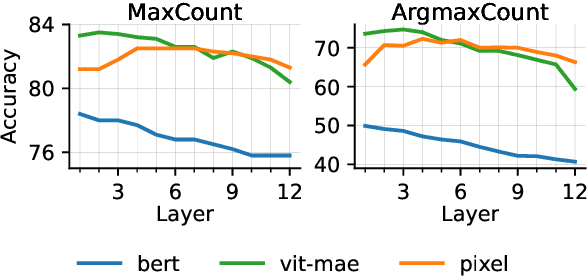
Abstract:Pixel-based language models have emerged as a compelling alternative to subword-based language modelling, particularly because they can represent virtually any script. PIXEL, a canonical example of such a model, is a vision transformer that has been pre-trained on rendered text. While PIXEL has shown promising cross-script transfer abilities and robustness to orthographic perturbations, it falls short of outperforming monolingual subword counterparts like BERT in most other contexts. This discrepancy raises questions about the amount of linguistic knowledge learnt by these models and whether their performance in language tasks stems more from their visual capabilities than their linguistic ones. To explore this, we probe PIXEL using a variety of linguistic and visual tasks to assess its position on the vision-to-language spectrum. Our findings reveal a substantial gap between the model's visual and linguistic understanding. The lower layers of PIXEL predominantly capture superficial visual features, whereas the higher layers gradually learn more syntactic and semantic abstractions. Additionally, we examine variants of PIXEL trained with different text rendering strategies, discovering that introducing certain orthographic constraints at the input level can facilitate earlier learning of surface-level features. With this study, we hope to provide insights that aid the further development of pixel-based language models.
Recipe for Zero-shot POS Tagging: Is It Useful in Realistic Scenarios?
Oct 14, 2024



Abstract:POS tagging plays a fundamental role in numerous applications. While POS taggers are highly accurate in well-resourced settings, they lag behind in cases of limited or missing training data. This paper focuses on POS tagging for languages with limited data. We seek to identify the characteristics of datasets that make them favourable for training POS tagging models without using any labelled training data from the target language. This is a zero-shot approach. We compare the accuracies of a multilingual large language model (mBERT) fine-tuned on one or more languages related to the target language. Additionally, we compare these results with models trained directly on the target language itself. We do this for three target low-resource languages. Our research highlights the importance of accurate dataset selection for effective zero-shot POS tagging. Particularly, a strong linguistic relationship and high-quality datasets ensure optimal results. For extremely low-resource languages, zero-shot models prove to be a viable option.
Trans-Tokenization and Cross-lingual Vocabulary Transfers: Language Adaptation of LLMs for Low-Resource NLP
Aug 08, 2024Abstract:The development of monolingual language models for low and mid-resource languages continues to be hindered by the difficulty in sourcing high-quality training data. In this study, we present a novel cross-lingual vocabulary transfer strategy, trans-tokenization, designed to tackle this challenge and enable more efficient language adaptation. Our approach focuses on adapting a high-resource monolingual LLM to an unseen target language by initializing the token embeddings of the target language using a weighted average of semantically similar token embeddings from the source language. For this, we leverage a translation resource covering both the source and target languages. We validate our method with the Tweeties, a series of trans-tokenized LLMs, and demonstrate their competitive performance on various downstream tasks across a small but diverse set of languages. Additionally, we introduce Hydra LLMs, models with multiple swappable language modeling heads and embedding tables, which further extend the capabilities of our trans-tokenization strategy. By designing a Hydra LLM based on the multilingual model TowerInstruct, we developed a state-of-the-art machine translation model for Tatar, in a zero-shot manner, completely bypassing the need for high-quality parallel data. This breakthrough is particularly significant for low-resource languages like Tatar, where high-quality parallel data is hard to come by. By lowering the data and time requirements for training high-quality models, our trans-tokenization strategy allows for the development of LLMs for a wider range of languages, especially those with limited resources. We hope that our work will inspire further research and collaboration in the field of cross-lingual vocabulary transfer and contribute to the empowerment of languages on a global scale.
A Principled Framework for Evaluating on Typologically Diverse Languages
Jul 06, 2024Abstract:Beyond individual languages, multilingual natural language processing (NLP) research increasingly aims to develop models that perform well across languages generally. However, evaluating these systems on all the world's languages is practically infeasible. To attain generalizability, representative language sampling is essential. Previous work argues that generalizable multilingual evaluation sets should contain languages with diverse typological properties. However, 'typologically diverse' language samples have been found to vary considerably in this regard, and popular sampling methods are flawed and inconsistent. We present a language sampling framework for selecting highly typologically diverse languages given a sampling frame, informed by language typology. We compare sampling methods with a range of metrics and find that our systematic methods consistently retrieve more typologically diverse language selections than previous methods in NLP. Moreover, we provide evidence that this affects generalizability in multilingual model evaluation, emphasizing the importance of diverse language sampling in NLP evaluation.
What is 'Typological Diversity' in NLP?
Feb 14, 2024



Abstract:The NLP research community has devoted increased attention to languages beyond English, resulting in considerable improvements for multilingual NLP. However, these improvements only apply to a small subset of the world's languages. Aiming to extend this, an increasing number of papers aspires to enhance generalizable multilingual performance across languages. To this end, linguistic typology is commonly used to motivate language selection, on the basis that a broad typological sample ought to imply generalization across a broad range of languages. These selections are often described as being 'typologically diverse'. In this work, we systematically investigate NLP research that includes claims regarding 'typological diversity'. We find there are no set definitions or criteria for such claims. We introduce metrics to approximate the diversity of language selection along several axes and find that the results vary considerably across papers. Crucially, we show that skewed language selection can lead to overestimated multilingual performance. We recommend future work to include an operationalization of 'typological diversity' that empirically justifies the diversity of language samples.
Sociolinguistically Informed Interpretability: A Case Study on Hinglish Emotion Classification
Feb 05, 2024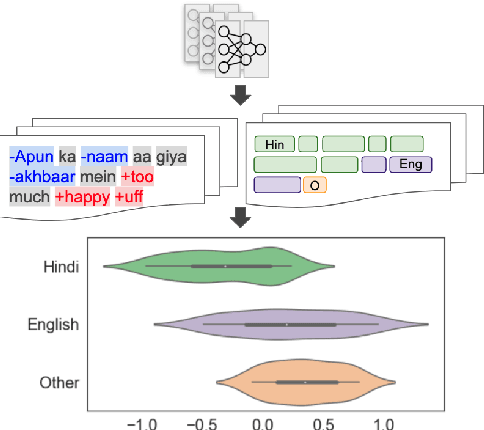

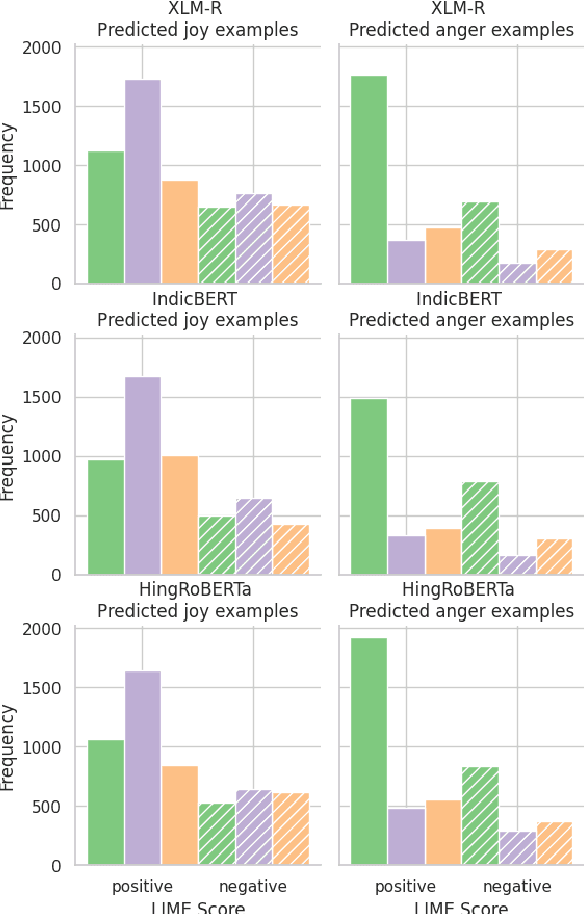

Abstract:Emotion classification is a challenging task in NLP due to the inherent idiosyncratic and subjective nature of linguistic expression, especially with code-mixed data. Pre-trained language models (PLMs) have achieved high performance for many tasks and languages, but it remains to be seen whether these models learn and are robust to the differences in emotional expression across languages. Sociolinguistic studies have shown that Hinglish speakers switch to Hindi when expressing negative emotions and to English when expressing positive emotions. To understand if language models can learn these associations, we study the effect of language on emotion prediction across 3 PLMs on a Hinglish emotion classification dataset. Using LIME and token level language ID, we find that models do learn these associations between language choice and emotional expression. Moreover, having code-mixed data present in the pre-training can augment that learning when task-specific data is scarce. We also conclude from the misclassifications that the models may overgeneralise this heuristic to other infrequent examples where this sociolinguistic phenomenon does not apply.
CreoleVal: Multilingual Multitask Benchmarks for Creoles
Oct 30, 2023Abstract:Creoles represent an under-explored and marginalized group of languages, with few available resources for NLP research. While the genealogical ties between Creoles and other highly-resourced languages imply a significant potential for transfer learning, this potential is hampered due to this lack of annotated data. In this work we present CreoleVal, a collection of benchmark datasets spanning 8 different NLP tasks, covering up to 28 Creole languages; it is an aggregate of brand new development datasets for machine comprehension, relation classification, and machine translation for Creoles, in addition to a practical gateway to a handful of preexisting benchmarks. For each benchmark, we conduct baseline experiments in a zero-shot setting in order to further ascertain the capabilities and limitations of transfer learning for Creoles. Ultimately, the goal of CreoleVal is to empower research on Creoles in NLP and computational linguistics. We hope this resource will contribute to technological inclusion for Creole language users around the globe.
A Two-Sided Discussion of Preregistration of NLP Research
Feb 20, 2023Abstract:Van Miltenburg et al. (2021) suggest NLP research should adopt preregistration to prevent fishing expeditions and to promote publication of negative results. At face value, this is a very reasonable suggestion, seemingly solving many methodological problems with NLP research. We discuss pros and cons -- some old, some new: a) Preregistration is challenged by the practice of retrieving hypotheses after the results are known; b) preregistration may bias NLP toward confirmatory research; c) preregistration must allow for reclassification of research as exploratory; d) preregistration may increase publication bias; e) preregistration may increase flag-planting; f) preregistration may increase p-hacking; and finally, g) preregistration may make us less risk tolerant. We cast our discussion as a dialogue, presenting both sides of the debate.
 Add to Chrome
Add to Chrome Add to Firefox
Add to Firefox Add to Edge
Add to Edge